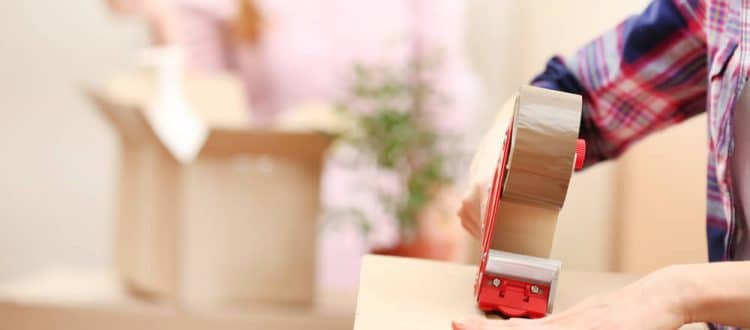7 Tips for Packing Fragile Items
So you’re moving in the North Carolina area, and you want to DIY the process. That’s great! The more you do yourself, the more affordable your move will be. But do you know how to pack fragile items without accidentally breaking them on the way?
Your fragile things will need to be handled with care. The more securely you package each individual item, the better off you’ll be. And if you’re dealing with a lot of tiny trinkets, you can always call us. We’ll give you a free estimate for how much it’ll cost to pack your fragile items.
Boxes get shuffled around a lot during the moving process. It’s vital that you pack fragile items to be as secure as possible. Make sure you leave yourself enough time! You’ll probably need to do a lot of individual wrapping, and that is a time-consuming task.
Here are the key things to keep in mind when you pack fragile items for a move.
1. Small boxes are your friend.
Here’s a mistake that people make all the time: They dump their heaviest things into the largest boxes. You would not believe how often a person realizes too late: That giant box holding their home library isn’t easy to carry.
Now, you won’t have to keep this in mind to pack fragile items… unless they’re heavy. Put your hollow glass and delicate china aside. Do you have any items that are bulky, cumbersome, or just plain heavy? Delegate those to your smallest boxes.
Seriously. Your spine will thank you later.
2. Sturdy boxes are even friendlier.
You might think that this sounds obvious. If you’re going to pack fragile items, the boxes need to be sturdy. Of course. But people sometimes forget about how important that exterior packaging is.
You might be able to pick up some free boxes from the liquor store for your basic things. But for fragile stuff, you want something a lot sturdier.
How do you tell if a box is sturdy?
Pick it up. Poke the sides and the bottom.
Was there any give in the cardboard? Or was it unmoving like a sentinel?
If the box is wobbly, you definitely don’t want to use it to pack fragile items.
3. Tape the bottom!
A nightmare scenario: The bottom of your box breaks. The flaps fly open. The contents scatter upon the unforgiving asphalt.
It might seem unlikely, especially with a sturdy box. But the heavier you pack, the more likely a tragedy becomes.
That’s why you should reinforce the bottom of the box with extra packing tape. Layer it in a few vertical and horizontal strips. That way, when you pack fragile items inside, you can be confident that it won’t burst.
4. Softly, gently pad the box.
A little insulation goes a long way. Before you pack fragile items away into the box, make sure you add a layer of padding on the bottom. If you’re feeling adventurous, layer the sides, too.
It shouldn’t be hard to find padding. You can use traditional methods like bubble wrap or packing paper. Styrofoam peanuts are messy, but they get the job done.
Or you could even consolidate some of your packing. Do your bath towels have a house yet? If not, you could simply layer one on the bottom of each box as you pack fragile items.
5. Bottom heavy or bust!
Ever put your eggs at the bottom of a bag in the grocery self-checkout? There’s nothing like the dread of opening the carton. You certainly don’t want that feeling with your precious things.
So put the heaviest things in first. That will prevent smaller pieces from getting crushed. Plus it will help balance the box’s center of gravity. In turn, that will keep it from tipping over or spilling during the move.
6. Dividers and fillings, oh my!
If you’re putting glasses and mugs in the same box, make sure each one is separated by a piece of cardboard. That will keep the items from rubbing against each other and potentially chipping.
While you’re at it, make sure you stuff all of your glasses with packing paper. The same goes for any other hollow items. Bowls, vases, candle holders, jars, you name it. The packing paper will reduce vibrations during transit.
7. Wrap all of the items individually.
Yes, this is the time-consuming part. And yes, it’s worth it! Make sure that you wrap every individual piece separately. If your teapot has a lid, that needs to have its own special wrapping.
Delicate pieces like fine china should all be secured with bubble wrap. For less fragile or bulkier items, you might use packing paper or more bath towels.
Ultimately, you want your move to be as smooth as possible. As long as you leave yourself ample time to do this, you shouldn’t have any trouble. But you can always call us if you get stuck.

